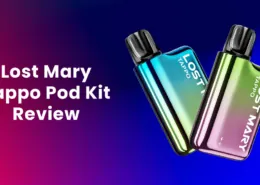Disposable Vapes Sold Yearly Could Stretch Across U.S. Twice
If all the disposable e-cigarettes purchased annually in America were laid end-to-end, they would extend over 7,000 miles – enough to traverse the perimeter of the continental U.S. over 7 times. This staggering projection highlights the mammoth waste impact of disposables’ meteoric rise.
CDC data reveals nearly 12 million disposable vapes are sold monthly nationwide as demand explodes. But their single-use plastic bodies pile up indefinitely after disposal, causing an unprecedented e-waste crisis.
Disposable Vape Usage Skyrockets
Once a niche product, disposables now comprise over 50% of total vape sales as of early 2023, overtaking past leaders like Juul. Brands like Puff Bar rule the market based on flavors and convenience.
A 2020 regulatory loophole exempting disposables from flavor bans catalyzed their ascent as users sought continued variety. But the environmental impacts have been devastating.
Based on current sales figures, disposables discarded annually placed end-to-end would extend an estimated 7,000+ miles – more than twice across the continental United States.
This equates to almost enough disposable waste to circle the entire perimeter of the country over 7 times. The volumes are piling up exponentially with no end in sight.
Issues of Disposable Vapes
Disposables contain lithium batteries and nicotine liquid, classifying them as both electronic and hazardous waste when tossed. Most end up in landfills due to limited recycling.
Researchers also found disposable vape litter constituting the highest waste impact within the vaping product class given their single-use nature before disposal.
Lawmakers in some jurisdictions are pursuing regulations to limit sales of disposables lacking FDA approval and mandate eco-friendly disposal standards.
But industry opposition has stalled proposals even as some cities separately sue to block sales of items like flavored disposables. More assertive policies are likely required.
Vaping trade groups argue disposables are recyclable and claim the industry is working to minimize waste impacts. But no formal nationwide programs exist.
With no accountability, disposables keep ending up discarded as trash. Voluntary measures have demonstrably failed to address the swelling crisis.
Switching to Reusables
Until structural solutions arise, individual vapers can lessen impacts by choosing refillable and reuseable devices designed for reuse rather than promptly discarding.
Consumer purchasing power matters. No short-lived product should create centuries of pollution. But disposable vaping risks environmental calamity without intervention.
- Pakistan Halts Vape Crackdown Pending Legislation - July 4, 2025
- Wisconsin New Law Banning Sale of Most Vape Products - July 4, 2025
- Vaping Laws in Oklahoma: A Comprehensive Guide for 2025 - July 3, 2025









